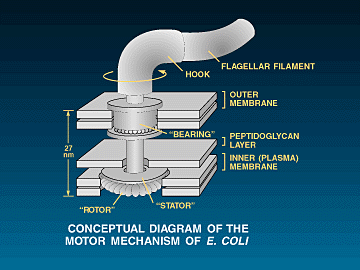In considering the Origin of Species, it is quite conceivable that a naturalist, reflecting on the mutual affinities of organic beings, on their embryological relations, their geographical distribution, geological succession, and such other facts, might come to the conclusion that each species had not been independently created, but had descended, like varieties, from other species. Nevertheless, such a conclusion, even if well founded, would be unsatisfactory, until it could be shown how the innumerable species inhabiting this world have been modified, so as to acquire that perfection of structure and coadaptation which most justly excites our admiration (Darwin, 1859, p. 66).
"some critics turned against Darwin's teachings for religious reasons, but they were a minority; most of his opponents ... argued on a completely scientific basis."
He goes on to explain:
...the reasons for rejecting Darwin's proposal were many, but first of all that many innovations cannot possibly come into existence through accumulation of many small steps, and even if they can, natural selection cannot accomplish it, because incipient and intermediate stages are not advantageous (Lovtrup, 1987).
Darwin offered strong, if grudging, praise and took Mivart far more seriously than any other critic...Mivart gathered, and illustrated "with admirable art and force" (Darwin's words), all objections to the theory of natural selection---"a formidable array" (Darwin's words again). Yet one particular theme, urged with special attention by Mivart, stood out as the centerpiece of his criticism. It remains today the primary stumbling block among thoughtful and friendly scrutinizers of Darwinism. No other criticism seems so troubling, so obviously and evidently "right" (against a Darwinian claim that seems intuitively paradoxical and improbable).
Mivart awarded this criticism a separate chapter in his book, right after the introduction. He also gave it a name, remembered ever since. He called it "The Incompetency of 'Natural Selection' to account for the Incipient Stages of Useful Structures." If this phrase sounds like a mouthful, consider the easy translation: we can readily understand how complex and full developed structures work and owe their maintenance and preservation to natural selection---a wing, an eye, the resemblance of a bittern to a branch or of an insect to a stick or dead leaf. But how do you get from nothing to such an elaborate something if evolution must proceed through a long sequence of intermediate stages, each favored by natural selection? You can't fly with 2% of a wing or gain much protection from an iota's similarity with a potentially concealing piece of vegetation. How, in other words, can natural selection explain these incipient stages of structures that can only be used (as we now observe them) in much more elaborated form (Gould, 1985)?
"one point stands high above the rest: the dilemma of incipient stages. Mivart identified this problem as primary and it remains so today."
As a final comment, one can only marvel at the intricacy in a simple bacterium, of the total motor and sensory system which has been the subject of this review and remark that our concept of evolution by selective advantage must surely be an oversimplification. What advantage could derive, for example, from a "preflagellum" (meaning a subset of its components), and yet what is the probability of "simultaneous" development of the organelle at a level where it becomes advantageous (Macnab, 1978)?

Figure 7: Conceptual block diagram of the sensory and motor mechanism of the bacterium, E. coli.

Figure 8: Conceptual diagram of the motor mechanism of E. coli.
- Title Page
- Conflicts Between Darwin and Paleontology
- Conflicts Between Darwin and Geological Succession
- Facts, Fossils, and Philosophy
- References